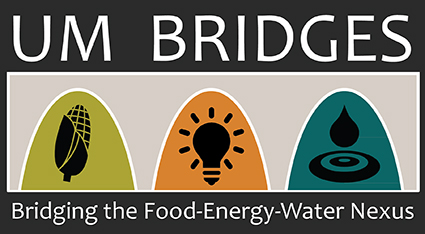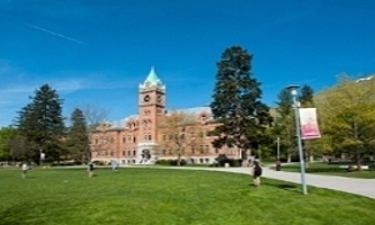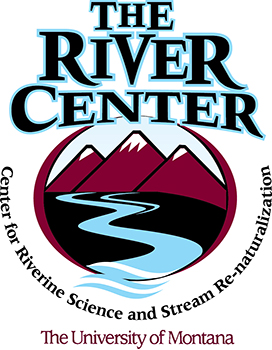
A Glimpse at the University of Montana's Path to a Sustainable Future

By Andrew Lahr, PhD Candidate/UM BRIDGES Fellow
As climate change exacerbates problems affecting many of Montana’s natural resources, it is apparent to leaders at the University of Montana that the university and the people there have a role to play in reducing their impact by taking action. UM has committed to reducing its reliance on non-renewable energy as well as promoting sustainable choices and lifestyles on campus and the surrounding community. This commitment came to life in 2010 with the writing of the UM Climate Action Plan. This plan set out to inventory the university’s impacts on climate change and greenhouse gas emissions, and to determine ways in which the university could lessen these impacts.
From the university’s greenhouse gas inventory, it was evident that the operation of campus buildings and transportation were the primary sources of energy consumption, followed by solid waste disposal and agriculture. With this information in hand, UM leaders decided on emission reduction strategies and actions varying in costs, as well as benefits realized in reduced emissions. Many of these actions and strategies involve major shifts to energy sovereignty in the university’s energy portfolio (e.g. switching to solar, building a biomass plant, LEED construction on new buildings) as well as smaller societal shifts such as moving to a 4-day work week, turning off drinking fountains, and encouraging behavior changes around conserving energy through curriculum and training.
Although many of the proposed strategies have yet to come to fruition due to their high initial costs, a simple walk around campus and the neighboring communities illustrates UM’s commitment to sustainability strategies over the last 8 years. Of its many advancements in sustainability, one of the most interesting and charismatic is the University’s farm operations. As mentioned, of the university’s top contributors to energy consumption and GHG emissions in 2010 was solid food waste and agriculture. These sectors are mostly made up of food consumption on campus, from dining hall to UC. In order to centralize and reduce the impacts of these processes, UM has prioritized the reuse of its food waste by composting it, as well as producing a portion of the food sold on campus itself on local university run farms. In addition to the presence of these farms, UM dining services actively serves food grown on its properties out of soil produced from composted food waste on campus every day in its dining hall and university center. This “Farm to College” program has been used as a model at numerous other universities.
Another visible advancement in the university’s push to sustainable operations is the centralization of energy production promotion of sustainable living. From solar panels to wind turbines on the recreation center, the university has made improvements in creating sustainable energy producing infrastructure, and in so doing, has reached its goal to reduce building energy consumption and switch to clean renewable energy as much as possible. So much so, that as of the summer of 2017, the university campus Recreation Center was determined to be completely carbon neutral. In addition to the employment of renewable energy production, this goal was achieved by educating university facility staff on ways in which they could change their everyday behavior in that building to reduce energy use. Although the naming of the Rec Center as carbon neutral was seen as a major win in terms of the university’s future toward complete carbon neutrality, by itself it is a drop in the bucket. The true win here was the university’s ability to employ established sustainability curricula and education systems to encourage efficient use of energy. This isn’t limited to the recreation department either. A quick look at UM’s website of available degree programs shows several majors, minors, and certificate programs that teach its faculty and students the importance of sustainable living and how to promote, advocate for, and live by those ideals. The university also includes sustainability in new student and employee orientation, outreach materials, community partnerships, continuing education courses, and community service activities.
